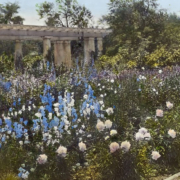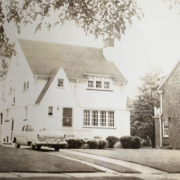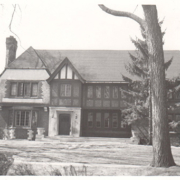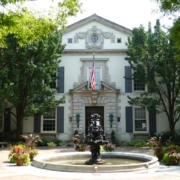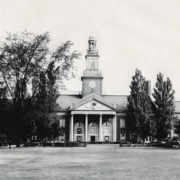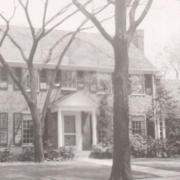Historical Architecture of Grosse Pointe – Gardeners World – Landscape Architect Ellen Biddle Shipman
As you know Grosse Pointe has a phenomenal array of architecture. Aside from having an abundant collection of residential and commercial structures from some of the nations leading architects, Grosse Pointe was also a hotbed for some of America’s leading landscape architects.
This week we focus on a landscape architect who helped transform the community in a monumental way. In terms of prominence this designer was considered a pioneer in her field during the first half of the 20th century.
Welcome to the work of Grosse Pointe’s most prolific landscape architect Ellen Biddle Shipman.
Ellen Biddle Shipman was an American landscape architect known for her formal gardens and lush planting style. Throughout her career, she created over 650 gardens, including 60 in Grosse Pointe – more than any other community in the United States.
Born in Philadelphia, 1869, Shipman spent her early childhood in Texas, before moving with her family back to the east coast where she would attend a boarding school in Baltimore. By 1910, having recently divorced, Shipman had begun to establish herself nationally as a talented garden designer. She was living in New Hampshire, close to the Cornish Art Colony, and had recently met architect, and fellow artist Charles A. Platt.
From the 1920’s through to the 1940’s Shipman ran an all-female office in New York, specializing in residential design. During the 1920’s Shipman’s natural skill as a designer and determination allowed her to break into the largely male occupation, while her work was receiving national recognition.
Ellen Shipman in Grosse Pointe
We believe Shipman’s first project in Grosse Pointe was in 1911 – the design of a formal garden at Lake Terrace – the estate owned by John S Newberry. She created a formal garden that often provided a wonderful setting for outdoor weddings, and parties for Newberry’s friends and family. The photo’s below shows some of the stunning floral displays at Lake Terrace (courtesy of the Library of Congress).
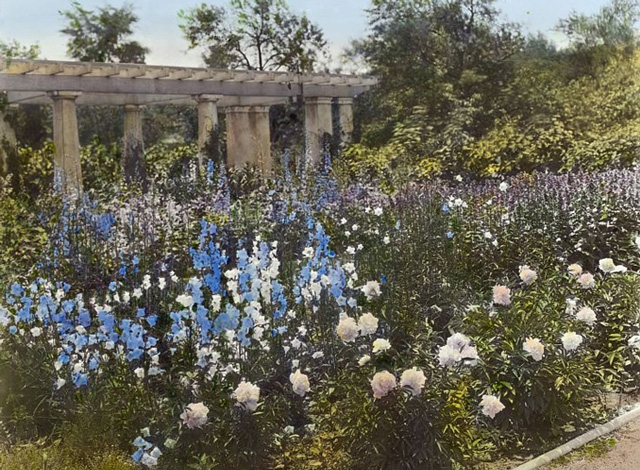
Following on from her project at Lake Terrace, Shipman teamed up with Charles A. Platt to create her most prominent project in Grosse Pointe – the gardens at Alger House (now known as the Grosse Pointe War Memorial). According to research in the book Grosse Pointe War Memorial by Ann Marie Aliotta, Suzy Berschback, Platt invited Shipman to design the garden at Alger House. He ‘wanted Shipman to refine his planting scheme for the entrance to the court and a small pool garden’. ‘He also called for a grapevine-cover pergola that drew the eye to the view of Lake St. Clair’. Based on research from Wikipedia ‘Platt did not know much about horticulture, but was highly respected and thought of as “the man who could design both house and garden for a country estate’.

Image courtesy of: Grosse Pointe War Memorial by Ann Marie Aliotta, Suzy Berschback

Image courtesy of: Grosse Pointe War Memorial by Ann Marie Aliotta, Suzy Berschback
Below are Shipman’s plans for part of the garden. Ann Marie Aliotta, Suzy Berschback research also reveals ‘one of Shipman’s much loved designs was the knot garden’. A knot garden consists of a formal layout – the concept dates back to 17th century Europe. Below are the photos of the knot garden she created at Alger House.

Image courtesy of: Grosse Pointe War Memorial by Ann Marie Aliotta, Suzy Berschback

Image courtesy of: Grosse Pointe War Memorial by Ann Marie Aliotta, Suzy Berschback

These plans are now housed at Carl Kroch Library at Cornell University
Shipman worked on many prestigious gardens throughout the Grosse Pointe communities. Some of her better-known projects include: (the dates below are approximate).
- 1913 – 355 Lincoln
- 1925 – 15366 Windmill Pointe Drive
- 1928 – 99 Lothrop with Charles A. Platt
- 1917 – 251 Lincoln (Murray Sales House)
- 1925 – 22 Webber Place (Oscar Webber Mansion)
- 1927 – 447 Lake Shore (Roy D Chapin Home)
- 1929 – 109 Kenwood (Lynn McNaughton Home)
Shipman was a familiar face in Grosse Pointe. One of her more intricate projects was her work at Rose Terrace (1934)., where she designed an elaborate floral and sculpture garden, which included 150yr old boxwood hedges imported from England.
Among her rare commercial projects in Grosse Pointe (and nationally) was her work on Lake Shore in 1932. Based on the research in The Buildings of Detroit, by William Hawkins Ferry, Lake Shore Road was made into a parkway. Shipman was commissioned to carefully landscape the area ‘so that the motorist is confronted with an ever-changing panorama of great beauty in every season of the year’.
Many national magazines featured Shipman’s work. In 1933, House and Garden named her the “Dean of Women Landscape Architects”. Much of Shipman’s work was influenced by the English style, and she preferred to look on her career of using plantings as if she “were painting pictures as an artist” (Source: Wikipedia). She died in Bermuda, 1950.
While many of her projects are now lost, the next time you drive along Lake Shore, enjoy the view that Ellen Biddle Shipman helped create, for it is a priceless work of art.
*Photos courtesy of the Higbie Maxon Agney archives unless stated.
Written by Katie Doelle
Copyright © 2016 Katie Doelle

